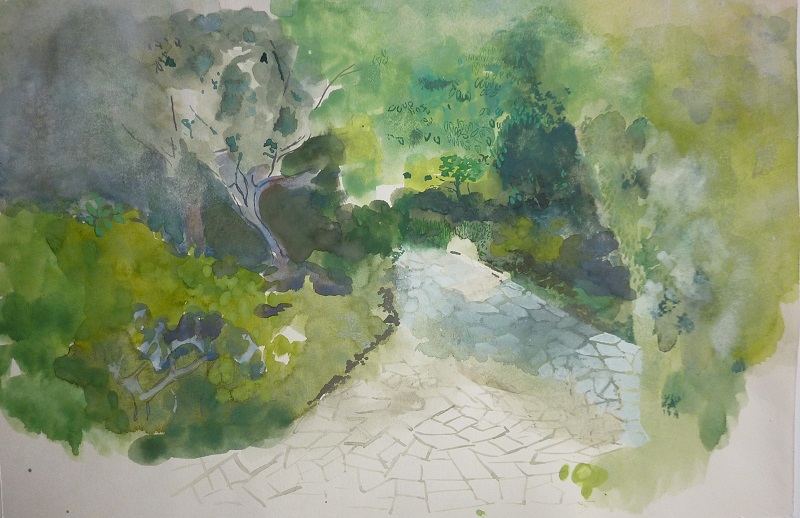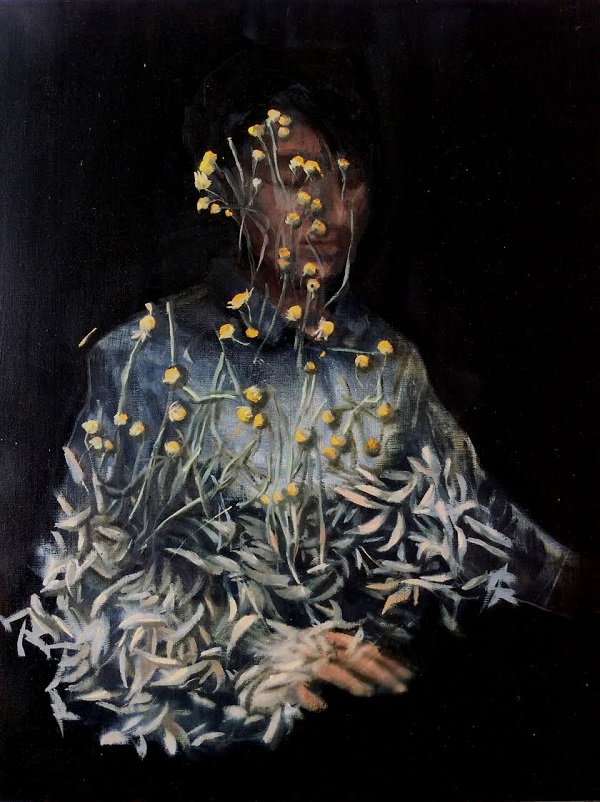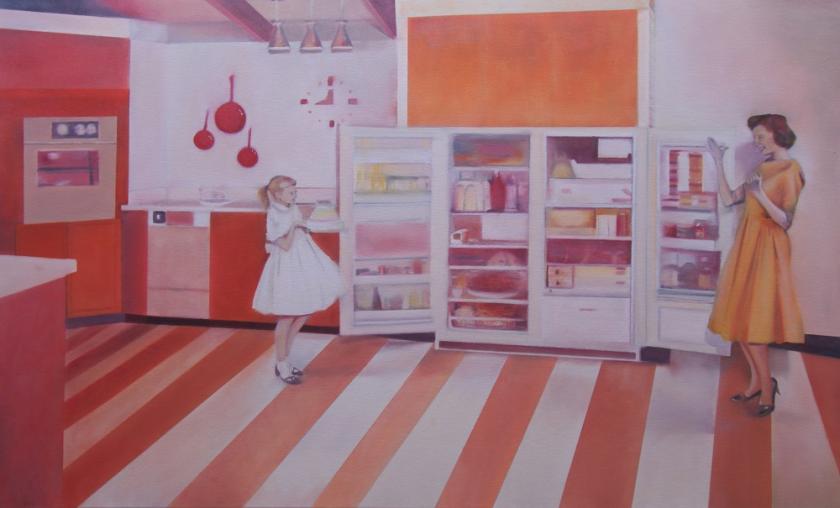It was always my dream to be an artist but I never expected to be a curator. Graduates considering vocations in critical and curatorial practice went to the Royal College of Art or studied art history at university. Not me: I trained at Chelsea College of Art and then went to the British School at Rome where I was the Abbey Scholar in Painting.
In general I like to work with painters – there's a poetry in painting that gives endless possibilities and painting is often about looking inward – searching the "space within". Silent Painting is the sixth show I have curated, featuring three women artists at an exciting new space in King’s Cross, the Tripp Gallery. The idea for the exhibition came when I stumbled across a painting I had not seen since I was a student. I was wandering around the National Gallery when I spotted Rembrandt's Self Portrait, 1669, made at the end of his life when he was 63 years old. It's quite a sad painting – the darkness of the work reflects the old man's mood as he contemplates his own demise and it seems he has nothing left to say. I wanted to find contemporary artists whose work spoke of that moment of “having nothing left to say”, when words and sounds fall silent. I was interested in how silence makes us feel and how we use paint sometimes as a tool to express our quiet moments. I also wanted it to be a small and intimate show of paintings and this artist-run, basement space in King's Cross was just perfect. The aim was to raise the question of whether painting has a voice, or the ability to touch on subjects that bring us to a psychological and material space where we can experience silence. As the painter Ansel Krut writes, “painting touches on the nature of silence, on distance and on exclusion. But most importantly, it touches on the privileges of looking.”
I wanted to find contemporary artists whose work spoke of that moment of “having nothing left to say”, when words and sounds fall silent. I was interested in how silence makes us feel and how we use paint sometimes as a tool to express our quiet moments. I also wanted it to be a small and intimate show of paintings and this artist-run, basement space in King's Cross was just perfect. The aim was to raise the question of whether painting has a voice, or the ability to touch on subjects that bring us to a psychological and material space where we can experience silence. As the painter Ansel Krut writes, “painting touches on the nature of silence, on distance and on exclusion. But most importantly, it touches on the privileges of looking.”
In Silent Painting, three female painters make work (in their own quiet way) about contemporary issues. We met through the networking group The Bricklayer's Brunch which I founded in 2014 to help artists reconnect and exhibit again after a career break. Julie Fountain's paintings are small and her medium is delicate watercolour and gouache on paper. Fountain's work reflects the artist's internalised emotional landscape and painting them is partly therapy for processing what she describes as her day-to-day anxieties (pictured above: Julie Fountain, Was It Here?, 2017). She frequently returns to the subject of her daughter: her paintings are often about the intense relationship that they have.
Olha Pryymak utilises visual, tactile and olfactory senses to tell a visual story. Paintings feature dramatically-lit female figures in quiet contemplation (pictured below right: Chamomile and Chrysanthemum for Stress Relief, 2016). At Tripp she has chosen to display the work on a shelf alongside herb-filled jars (the jars represent the ritualistic processes of growing, drying and consuming herbs used for their medicinal properties).
 The painting I have selected for this show from my own work is The Perfect 50s Housewife, 2018 (main picture). It tells the story of the American housewife from a bygone era, who has bought a new fridge and stuffed it with food and drink. Her daughter stands there showing off her huge homemade cake whilst the mother mimes “Isn't it big!”. The fashionable scenes displayed in my work are populated but focus on the non-communication or separation of each figure from the other, creating a void of silence.
The painting I have selected for this show from my own work is The Perfect 50s Housewife, 2018 (main picture). It tells the story of the American housewife from a bygone era, who has bought a new fridge and stuffed it with food and drink. Her daughter stands there showing off her huge homemade cake whilst the mother mimes “Isn't it big!”. The fashionable scenes displayed in my work are populated but focus on the non-communication or separation of each figure from the other, creating a void of silence.
Silent Painting raises the question of whether painting has a voice. Maybe it does, but what is certain is that painting has the ability to touch on subjects that bring us to a psychological and material space where we can experience silence.
- Silent Painting at Tripp Gallery, London, 22-25 March, then by appointment only. For more information email alex@alexandrab.org.uk.
- Paintings by Alexandra Baraitser can be seen as part of GLOW at Park Theatre, London, as part of the International Women's Day celebrations, until 30th April 2018
- Read more First Person features on theartsdesk









![SEX MONEY RACE RELIGION [2016] by Gilbert and George. Installation shot of Gilbert & George 21ST CENTURY PICTURES Hayward Gallery](/sites/default/files/styles/thumbnail_125_x_125_/public/mastimages/Gilbert%20%26%20George_%2021ST%20CENTURY%20PICTURES.%20SEX%20MONEY%20RACE%20RELIGION%20%5B2016%5D.%20Photo_%20Mark%20Blower.%20Courtesy%20of%20the%20Gilbert%20%26%20George%20and%20the%20Hayward%20Gallery._0.jpg?itok=3oW-Y84i)





Add comment